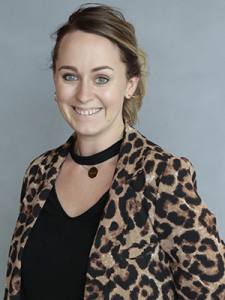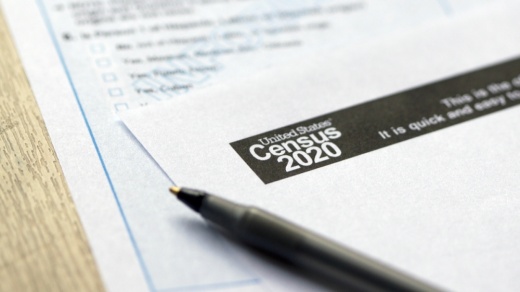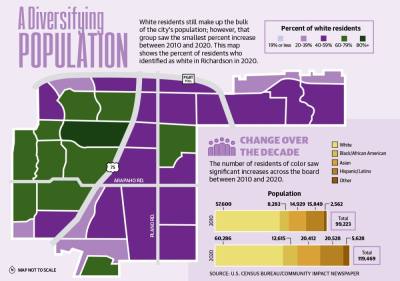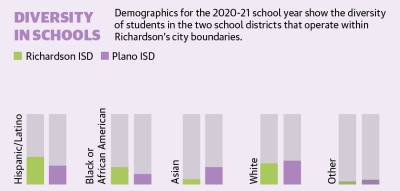The city was home to 119,469 people in 2020, an increase of more than 20% over the decade, according to the U.S. Census Bureau. The 2010 census counted Richardson’s population at 99,223.
According to the bureau, large cities with populations of 50,000 or more grew at a faster pace in the South than in any other region. Since the last census, the population of people in these cities grew by about 12%, per the bureau.
Due to the scarcity of developable land in Richardson, much of the city’s population uptick over the past decade is linked to more dense housing, Mayor
Paul Voelker said. Commercial milestones, such as the opening of CityLine, are also behind the shift.
“If you combine a good place to live, great neighborhoods, jobs and then finally access to those jobs ... that’s where our growth came from,” he said.
A melting pot
Richardson has long been known as a haven for people of various cultures, Voelker said. Having a diverse set of residents is advantageous for the city, he added.
“I can live around people that are different from me ... and not have to travel the world,” Voelker said. “I can have a business here with people that think differently and solve problems in different ways.”
The largest percent change in racial demographics occurred within the Black and African American community. The number of residents who fall into this category increased by more than 53%, from 8,238 to 12,615, according to the bureau.
The city’s share of Asian residents grew by nearly 37%, and residents who identify as Hispanic or Latino increased by nearly 30%. White residents still make up the bulk of the city’s population but saw only a less than 5% change over the decade.
The Richardson Police Department has made an effort to build in-roads with the city’s growing Hispanic/Latino population in recent years.
The purpose of its Unidos program is to not only build trust with Spanish-speaking residents but to also give them the necessary tools to avoid becoming victims of a crime, said Officer Raul Reyes, coordinator of the program and the department’s Latino community liaison.
“One of the topics we’ve talked about is how to buy a house,” he said. “So, what does that have to do with police business? And the reality is: nothing and everything. No, we don’t sell houses. But at the same time, we don’t want people to get scammed for $25,000 and then we have to ... try to find who the scammer is.”
Another group working to build relationships among residents is the Richardson Interfaith Alliance, which seeks to foster a sense of respect among members of various faiths.
“Most of the time we have these communication barriers and misunderstandings, and through education and increased awareness, we should be able to ... not just talk about religion but also act upon it,” said Niranjan Hanumanna, chair of the alliance.
Hanumanna said his group has grown from 20 faith-based groups to 40 such groups since it was formed in 2012.
India Association of North Texas, which is headquartered in Richardson and has around 40,000 regular members, works to promote Indian culture by hosting events and seminars. It also connects Asian and Indian residents to various resources, such as vaccinations and mental health care.
President of the association Shailesh Shah said residents who identify as Indian or Asian choose to live in Richardson because of the city’s high quality infrastructure, competitive home prices and renowned school district.
In June, Richardson residents elected Arefin Shamsul to City Council. Shamsul, who emigrated from Bangladesh to the U.S., has lived in Richardson since 2005, according to his online biography.
“Richardson has provided much to our family,” Shamsul said in his bio. “Transparent government, good infrastructure, strong [emergency medical services], fire and police protection, and great city parks, to name a few.”
Addressing equity in schools
Richardson ISD has also become more diverse since 2010. According to the Texas Education Agency, students of color make up about 70% of the district, while white students make up roughly 29%.
In response, the district has invested time and money into adapting curriculum and resources to support students of color, said Angie Lee, executive director of RISD’s Equity, Diversity and Inclusion Department, formed in 2017.
The district recently implemented a culturally responsive teaching framework and auditing tool to ensure that students see themselves reflected in their learning. RISD is also in its third year of offering an ethnic studies program, Lee said.
“Our data indicates that there’s a need for culturally relevant teaching in our classrooms, especially because of how diverse our classrooms are,” she said.
The district also made an effort to diversify its board of trustees following a 2018 lawsuit that alleged Voting Rights Act violations. At the heart of the lawsuit was RISD’s student demographics, which had shifted to majority non-white while the makeup of the school board had remained the same, the lawsuit claimed.
Upon settling the lawsuit in 2019, RISD moved to a majority single-member district system, in which five of its seven board members are elected by residents of specific areas. This system was intended to place more minority trustees on the board.
That same year, Regina Harris was elected as the first Black woman to serve on the RISD board. The following year, Debbie Rentería became the district’s first Hispanic trustee.
“My presence on the board speaks volumes,” Harris said. “Once we are out there in the community, being very active and proactive to show that someone like me can be in this position, it’s very impactful to our students.”
Student growth
Some of Richardson’s growth can also be attributed to an intentional move by The University of Texas at Dallas to invest in student housing.
The number of students attending UT Dallas grew by 73% between 2010 and 2021, according to data from the university. Preliminary figures show there were 29,698 students enrolled this fall. By 2030, the university hopes to reach 35,000 students.
UT Dallas had long been known as a commuter school, but in the mid-aughts, a decision was made to add more beds to campus, said Calvin Jamison, vice president for facilities and economic development. At the time, there were 2,500 beds. In 2009, the university opened its first residence hall, which added 400 beds.
Fast forward to this year, and the university has 5,200 beds on campus, plus more than 2,500 beds at Northside, a mixed-use development adjacent to campus geared toward students. All of these options comprise about 8,000 beds, Jamison said.
The university plans to accommodate future students by replacing some of its older housing inventory with more densely designed housing, Jamison said.
Next steps
Now that the city has its census data, staff can assess current and future infrastructure needs, Senior Planner Keith Krum said.
Voelker said he does not anticipate the city’s population growing past 135,000 residents.
Population counts gathered through the census are used to dictate the size and location of City Council districts in Richardson. All council members are elected at-large; however, four of the seven members must live within a specific place.
The city charter dictates that every 10 years a commission of registered voters reviews council boundaries to ensure they are equal from a population perspective, Assistant City Manager Shanna Sims-Bradish said.
Council should appoint that group early next year, Sims-Bradish said. The commission then has six months to review the data and recommend any revisions to the boundaries. A vote on the new council map is expected in mid-2022.








